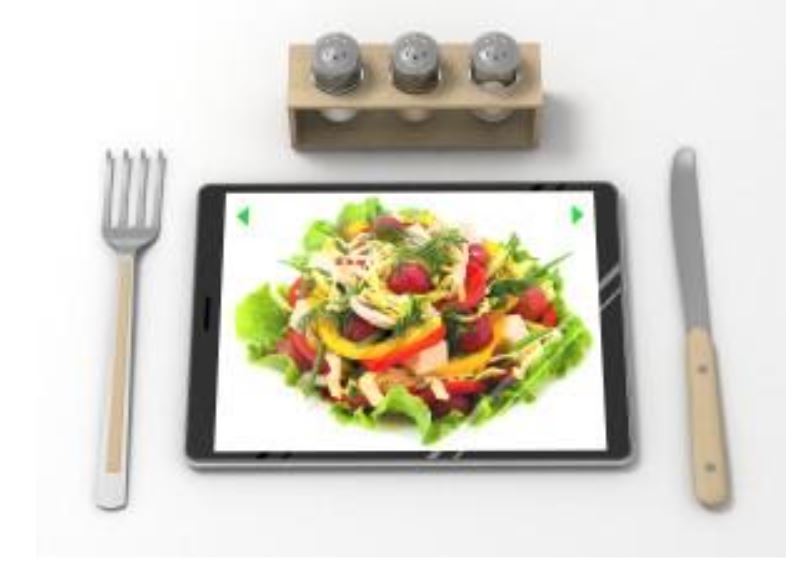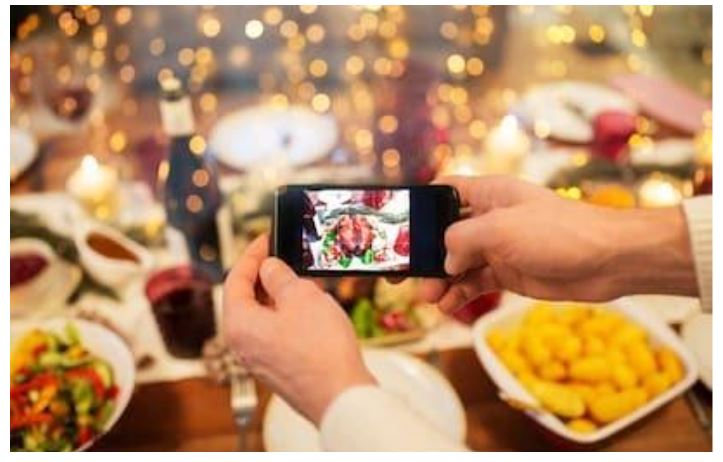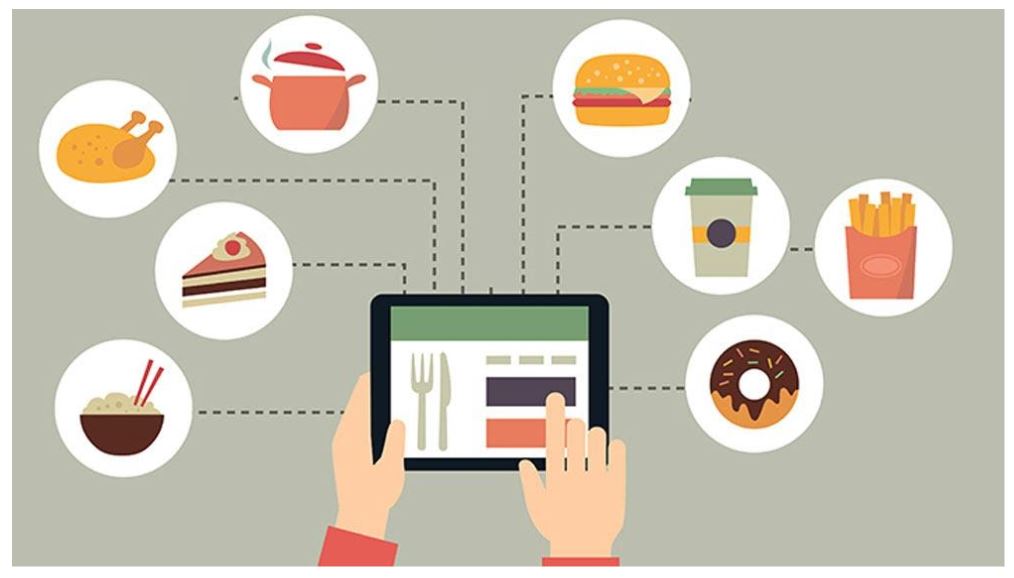Preface 2023
Preface – magazine 2023 A contemporary magazine feeds upon dynamism and vigour. It instantly perceives the inputs deriving from the readers and evolves, offering its best at...
Preface – magazine 2023 A contemporary magazine feeds upon dynamism and vigour. It instantly perceives the inputs deriving from the readers and evolves, offering its best at...
During the classic lunch breaks at the office, dinners with friends or Sunday brunches, how many times do we happen to think about the technology associated with the meal we are...
The subtleties of nature and health One of the most significant female figures of the early Middle Ages, Hildegard, lived along the Rhine River, in the tract that separates Hesse...
“Autumn. We already heard it coming / in the August wind, / in the September rains / torrential and weeping…”, this is how Vincenzo Cardarelli sang this...
“Let him bring huge lampreys or enormous salmons or pike, without letting it be known. A good eel is hardly bad, shad or tench or some good sturgeon, cakes or stuffed...
The use of national cuisine and typical local products has always been a powerful tool of cultural diplomacy to improve the country’s image and increase its influence and...
“He possessed great talent at painting flowers and figures”. It seems an obvious statement for our times, but the famous phrase, attributed to Caravaggio, overturned...
CLIMBING THE SKY IN HEALTH The great humanist philosopher Marsilio Ficino, whose Academy ennobled Florentine culture in the Laurentian era, had a special relationship with food....
We have spent the quarantine with our hands in the dough and we know more about yeast and flour. We now want to take a small trip to discover the “good smell” in...
In early June, more than 2300 years will have passed since the death of Alexander the Great; in fact, the Macedonian king died in 323 B.C., at 32, after a very short illness. The...
At the port of Livorno, no one had noticed the rustling of that bulky cloak. Blessed by the most desiring stars, the curved shape of Settimontano Squilla was embarking on a...
During the classic lunch breaks at the office, dinners with friends or Sunday brunches, how many times do we happen to think about the technology associated with the meal we are enjoying?

If the answer is “rarely”, or more plausibly “never”, it will not be surprising. Food is associated with the senses linked to tasting, a pleasant memory associated with it or the sociability and feeling of union generated at the table, only to name a few, not directly with the technological field.
Yet, although it is often not apparent, technology plays an increasingly important role in this sector. Among the most striking examples – discussed below – we can find the research in progress aimed at greater environmental sustainability in food production and a deeper involvement of large technological multinationals in the gastronomic and catering sector.
In the world of food farming, especially in the USA, they have been talking about Food Tech (that comes from the words “food” and “technology”) for some time. It includes all those projects or companies that use different technologies, including the Internet of Things (IoT), Big Data and Artificial Intelligence, to make the food sector more modern, sustainable and efficient in all its phases, from preparation, distribution to consumption.
But first things first.
Although food is a profoundly tangible element, linked to the physical sphere, it is one of the most popular topics in the digital world. Think of the reviews of cafes and restaurants that profoundly influence our choices – with TripAdvisor taking it over – or the applications for delivery services or those that allow online booking, such as The Fork, which, not negligible, is connected to TripAdvisor. Still, we cannot ignore the role of social media. Instagram, in particular, given its format based mainly on photos and videos, is the ideal platform for the food sector.
The advent of the digital has revolutionized the food world, and we can highlight some data:

Let’s move on to the first of the two examples mentioned above: the pursuit of greater environmental sustainability of food.
The application of technology in the food sector deals not just with the research and development of new machinery and more efficient production chains; not with the improvement of energy, water and land consumption, used in the making of food goods, but with the realization of real products. In particular, it may come as a surprise to know that among the winners awarded at the Consumer Electronics Show in Las Vegas in 2019, the most known electronics show in the world, one is a sandwich.
To be precise, it is the Impossible Burger 2.0, produced by the US start-up Impossible Foods, which, for several years, has been trying to make the way we eat eco-sustainable. According to the start-up founded by Pat Brown, professor of biochemistry at Stanford University, thanks to Impossible Burger 2.0 it is plausible to save 96% of the land, 87% of water and produce 89% less polluting emissions, as well as not killing any animal. This vegetable burger, among the various ingredients, contains heme, too. It is an organic compound based on iron. Its function is to provide the rest of the components with a similar-to-meat flavour and a blood-red beef colour.
Likewise, heme is present in small quantities in plants. And the start-up has managed to recreate enzymes capable of increasing the production of vegetable heme.The success of Impossible Burger 2.0 was such as to convince Burger King to introduce it in the menu of its 7,200 restaurants across the United States. However, surprises do not end here. An experiment conducted by the fast-food chain highlights that, during the tasting test, none of the customers could find any difference between a conventional hamburger and the new entry, the Impossible Whopper, which costs just one dollar more than the classic burger. Furthermore, as if that were not enough, the places offering the new burger recorded an increase in their clientele. On the contrary, the other outlets, where the vegetable alternative was not available, saw a slight reduction in customers[2].
All of this may seem paradoxical if you think about the success of a vegetable burger – that tastes like meat – within a fast-food chain associated with anything but healthy food. Nonetheless, since its founding in 2011, the start-up has raised investments for over 1.5 billion dollars[3], even thanks to investors such as Jay-Z, Serena Williams, Bill Gates and the Google Ventures fund.
Google, the search engine par excellence, has diversified its activities to enter the food industry. In 2018, it introduced, inside the Maps application, the possibility to add a rating to the restaurants present on the map. A few months later, Google started testing a new function that used machine learning technology. It showed the most popular meals of a restaurant according to reviews and photos posted by users. Furthermore, for its application Lens, Google has added the possibility of recommending the most popular meal of a restaurant by framing the menu with the mobile phone camera. Thanks to numerous partnerships, it has introduced the option to order and deliver at home using the Google Maps, Search and Assistant platforms.

According to Ryan Olohan, Managing Director of Food, Beverage & Restaurants at Google, the tech giant has entered this market “because digital demand has never been higher. There are over a billion restaurant searches on Google every month. ‘Food near me’ continues to be one of the fastest-growing search terms.” According to Olohan, 89% of all searches happen via smartphone. Thus, the presence of Google in the restaurant sector represents an advantage for both consumers and restaurateurs. If consumers can quickly find what they are looking for – and take advantage of home delivery, a request that has recorded an impressive increase at the time of Covid-19 -, the latter can tap into a market of over a billion customers. To these benefits, we should add the advantages that Google derives from them. While not selling any product, Google wants to be a protagonist in the catering market, worth about 900 billion dollars[4] undergoing a heavy pressure towards digitization, accelerated by the Covid-19 pandemic. Considering the dynamism of Google, we should expect that the giant will not stay indifferent to the chances of applying machine learning, voice search, home delivery and other digital services related to the restaurant sector.
Speaking of Food Tech, we need to mention Amazon, even if only for the influence that it can exert on other realities, whether they are competitors or partners. An online book retailer at first, Amazon has swiftly expanded its business, becoming one of the largest e-commerce platforms in the world. It runs Amazon Web Services, a crucial part of the Internet infrastructure. Recently, Amazon has also expressed an interest in the food sector, for example, Amazon-branded meal-kits sold on the three proprietary platforms, such as Amazon Prime, Go and Fresh.
With the latter, the e-commerce giant is trying to further step into the homes of American consumers. It represents a new way of shopping at small local retailers: through Amazon, it is possible to order fresh foods and get them home the same or next day, according to the customer’s needs. In addition to this, in 2017 the company bought Whole Foods, a high-end organic food chain, consisting of over 460 stores worth 13.7 billion dollars, which possesses a recognized, reliable, widespread brand and above all a clientele with an above-average income.
Purchasing Whole Foods, Amazon has expanded its network from an online platform to a physical retailer. This way, it has reduced its dependence on couriers, making stores a new alternative to home delivery and offering customers loyalty card points or vouchers to compensate them for home delivery failure.[5].

Another innovative experiment in retail is the Amazon Go, an automated grocery store. There are currently 26 Amazon Go stores in four US cities. Their main feature is proprietary Just Walk Out technology, and thanks to this, Amazon allows customers to shop without going through checkout.
It is sufficient to have installed an application on a smartphone and, when entering the store, it identifies the customer. Besides, cameras and sensors monitor the products – stored – or taken from the shelves, so once finished shopping, the client walks out, without going through a cashier. The cost of the purchased products is charged automatically on the customer’s account[6].
This mechanism saves much time: according to data from the US Bureau, Americans spend about 44 minutes to shop for groceries. On the other hand, numerous issues arise, such as those related to privacy. Amazon already knows its consumers very well, thanks to the enormous amount of data and personal information collected from the devices we use daily, such as voice control or other smartphone applications, and purchasing and viewing habits while browsing the web.As previously mentioned, given the influence that Amazon can generate, the giant could set the pace in the logistics, delivery and retail sectors. Specifically, it could end up authorizing Just Walk Out to other retailers, and, like most websites you visit rely on Amazon Web Services, Just Walk Out would make brick-and-mortar stores dependent on Amazon.
The next time we sit at the table, whether it is to enjoy a delicious dinner or a frugal meal, let’s try to keep in mind the role that technology, insignificant only in appearance, indeed plays in this part of our daily experience.
[1] The impact of Digital Transformation in the Food sector,, https://www.doxee.com/it/blog/digital-marketing/la-digital-transformation-nel-settore-food/
[2] Impossible Burger, the meat-flavoured veggie burger, 11 July 2019, https://www.fastweb.it/web-e-digital/impossible-foods-il-cibo-diventa-tecnologia/
[3] Impossible Foods closes $ 200 million in new funding to accelerate growth, August 13, 2020, https://impossiblefoods.com/media/news-releases/2020-08/Impossible-foods-closes-200-million-in-new-funding-to-accelerate-growth/
[4] Google Has Expanded Its Presence In The Restaurant Space. Here’s Why, May 5, 2020, https://www.forbes.com/sites/aliciakelso/2020/05/05/google-has-expanded-its-presence-in-the-restaurant-space-heres-why/#4523de8d2241
[5] Why Amazon buys Whole Foods. An analysis with the bowls stopped, July 2017,
https://it.businessinsider.com/perche-amazon-compra-whole-foods-unanalisi-a-bocce-ferme/
[6] What is Amazon Go and how does it work? July 2020, 2020, https://tecnobabele.istocks.club/che-cose-amazon-go-e-come-funziona/2020-07-09/